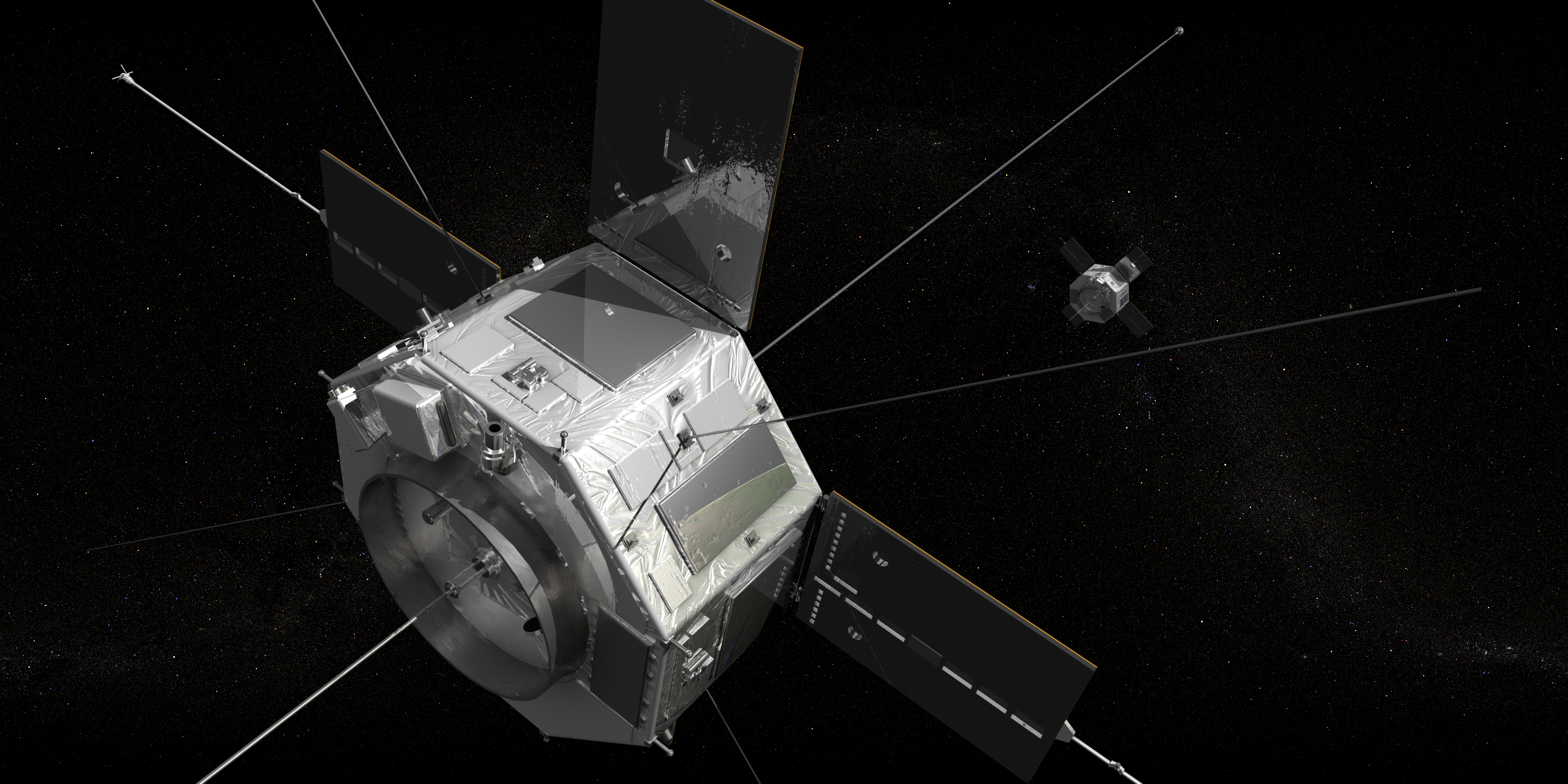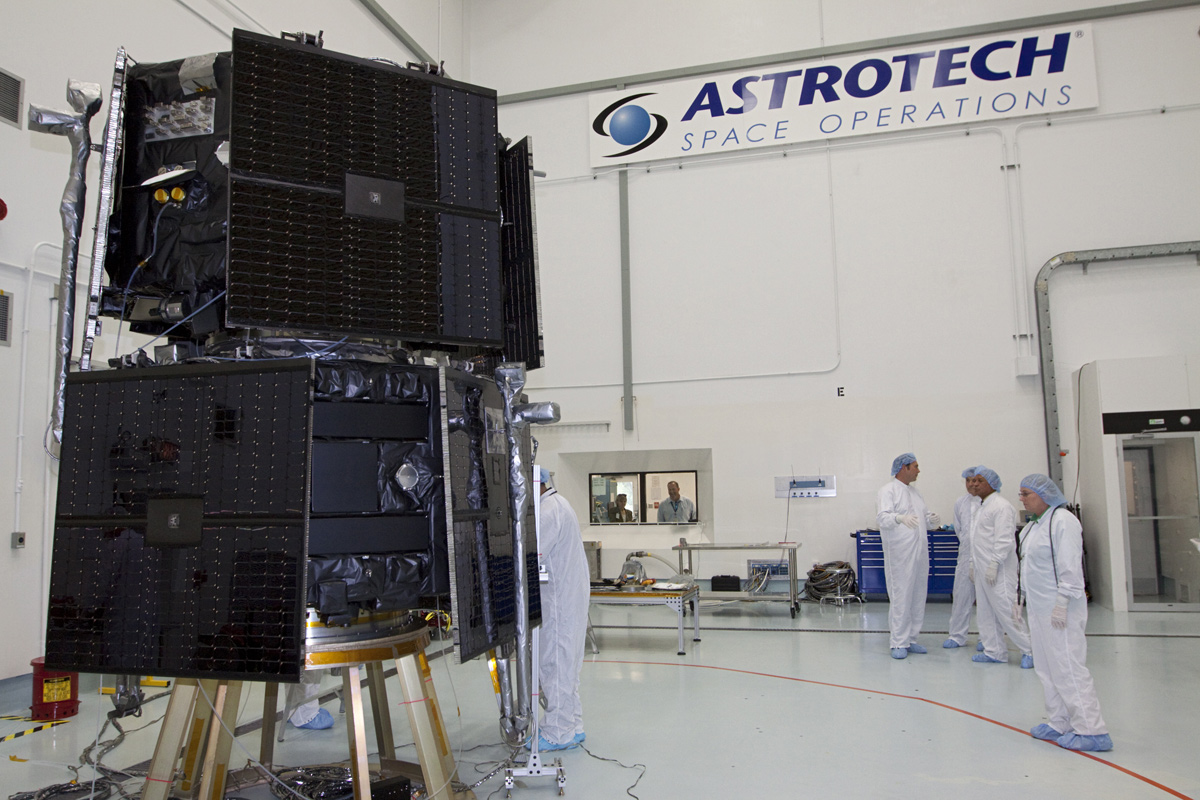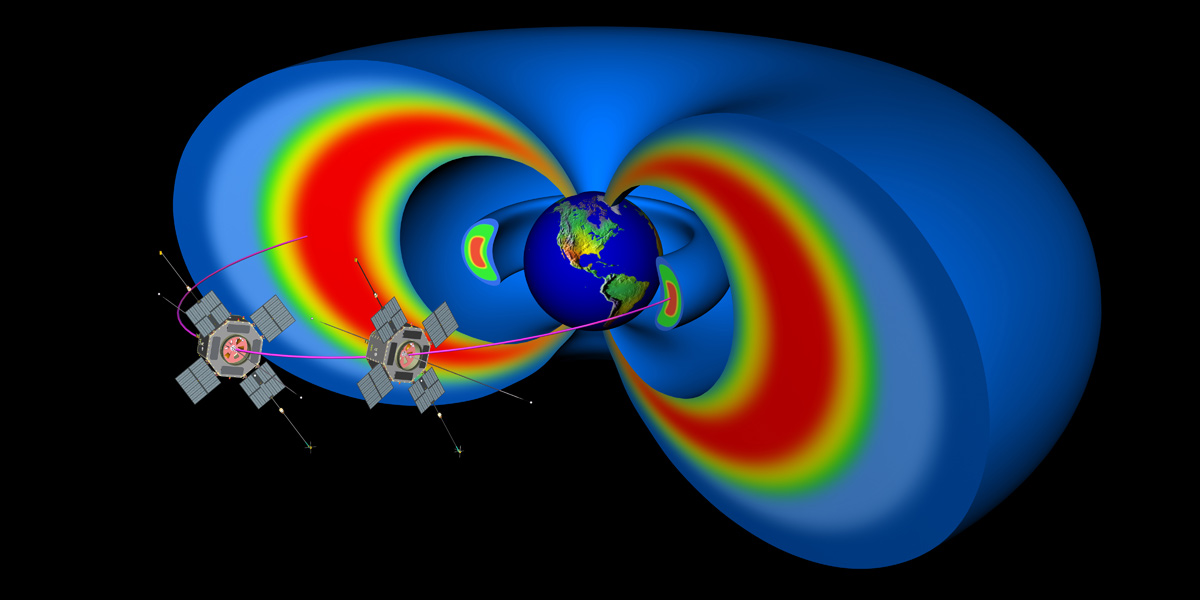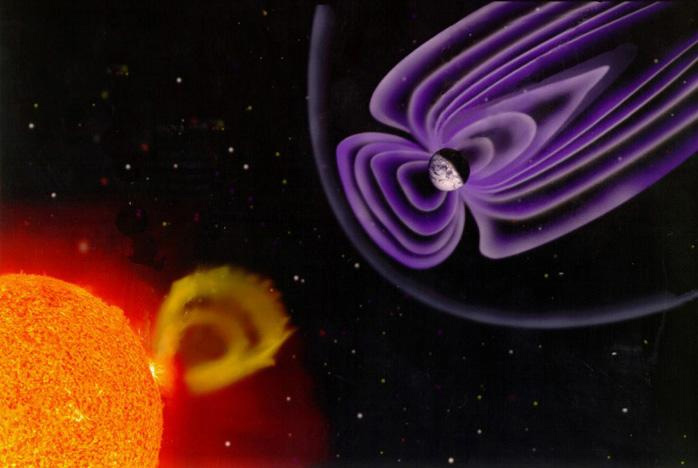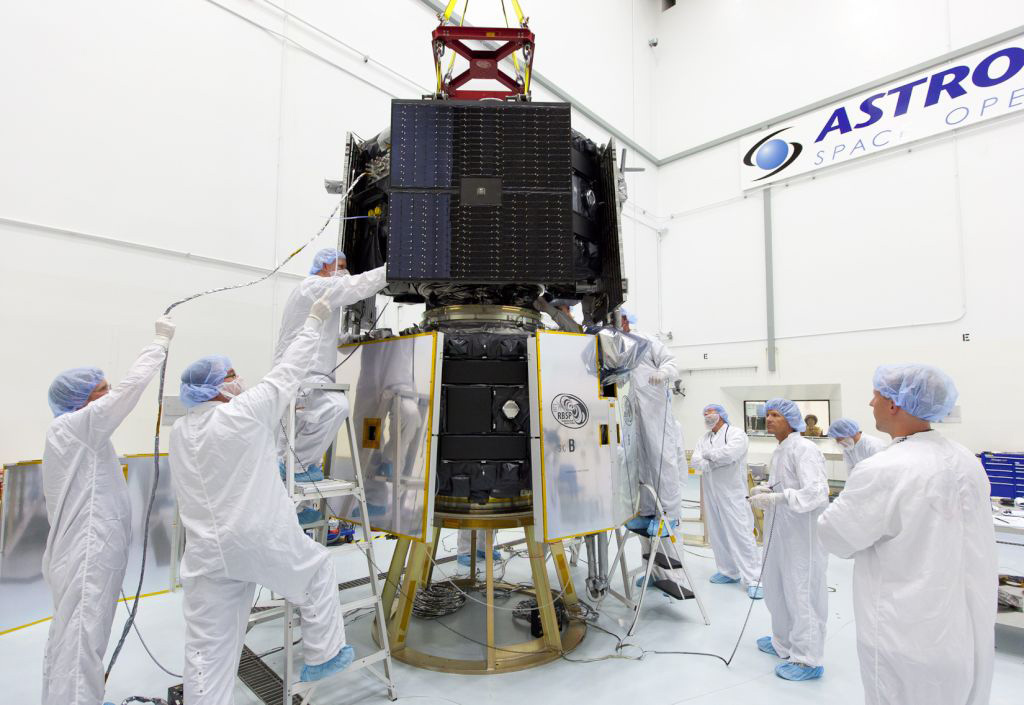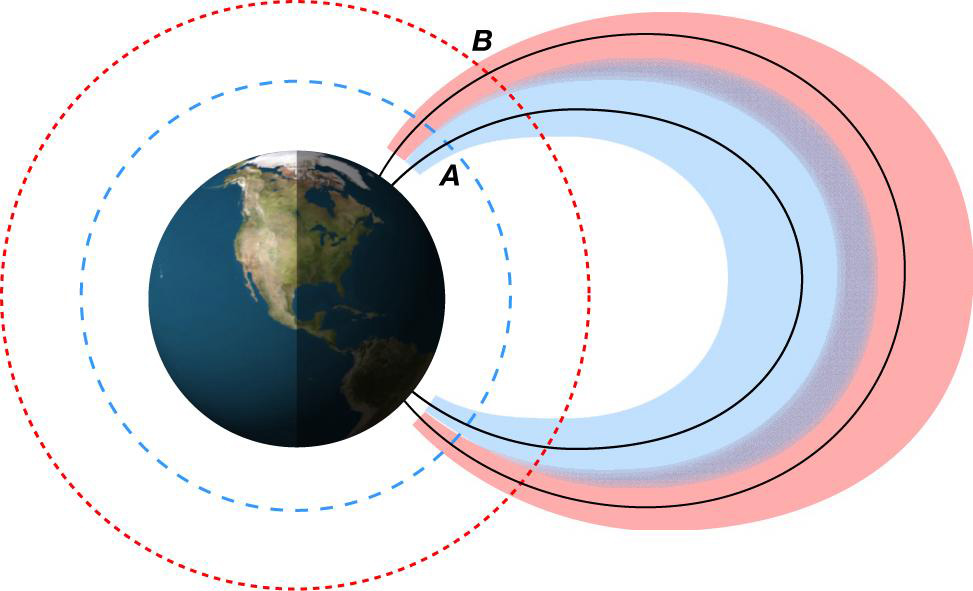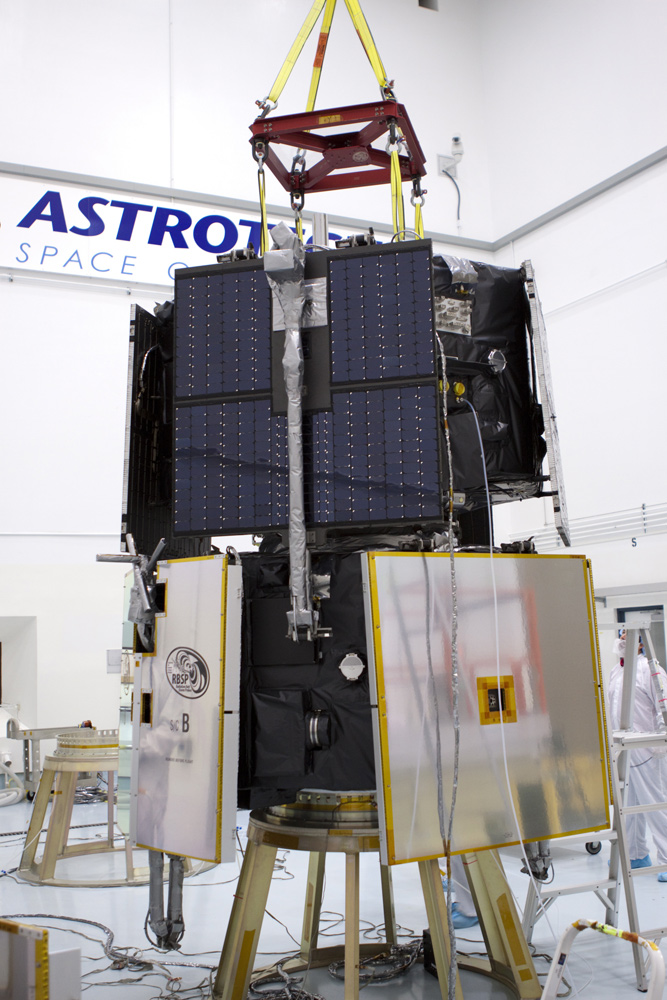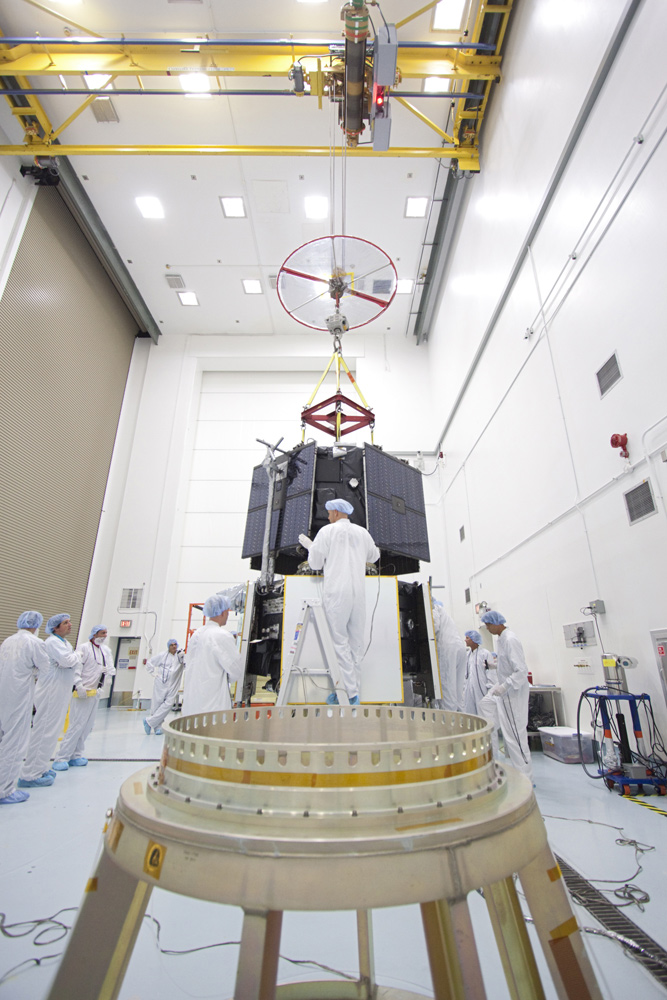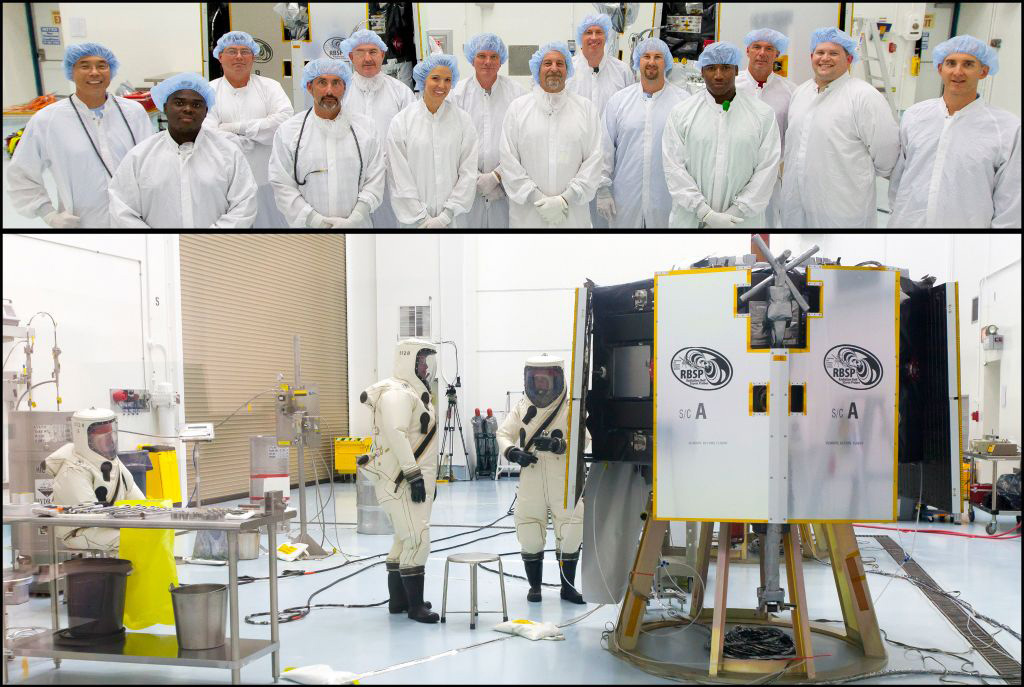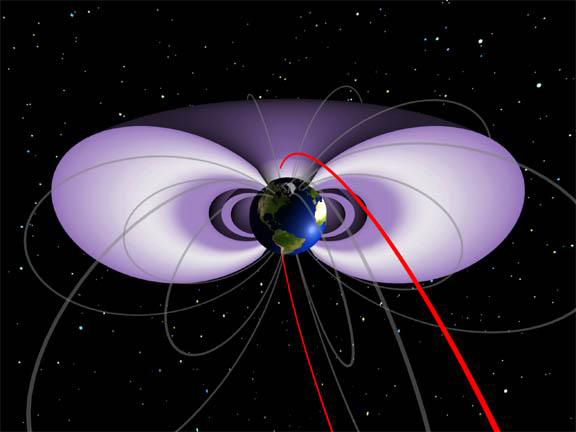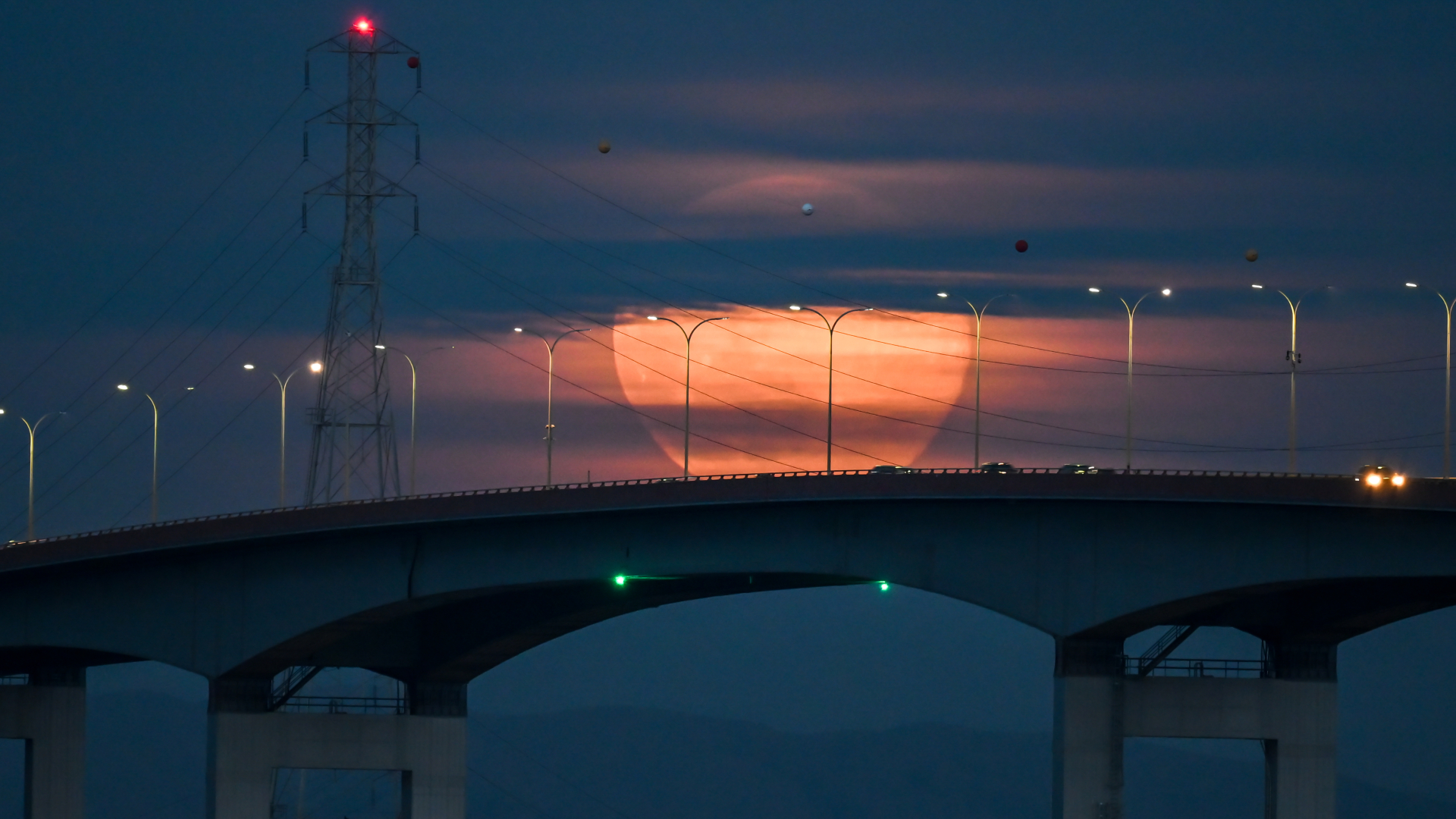NASA's Van Allen Probe Mission in Pictures
Artist's Rendition of Radiation Belt Storm Probes
An artist's rendition of what the two Radiation Belt Storm Probe spacecraft will look like in space.
Bolden, Cabana View Radiation Belt Storm Probes
Inside the Astrotech payload processing facility near NASA’s Kennedy Space Center in Florida, NASA Administrator Charlie Bolden, third from left, and Kennedy Space Center Director Bob Cabana, behind Bolden, tour the facility and view the Radiation Belt Storm Probes, or RBSP, spacecraft. Photo released August 2, 2012.
Radiation Belt Diagram
Artist's rendering showing two spacecraft representing the Radiation Belt Storm Probes that will study the sun and its effects on Earth.
Geospace Storms
The source of space weather, our dynamic sun, shown with a coronal mass ejection that will interact with the terrestrial magnetosphere producing geospace storms.
RBSP Spacecraft Stacked
NASA's twin RBSP spacecraft were stacked on July 27, 2012, inside the Astrotech payload processing facility in Titusville, FL.
Migration of the Radiation Belt
The migration of the radiation-belt safe zone occurs because the optimum wave-particle interaction region responsible for particle losses moves from its solar-minimum location (A) to a corresponding location (B) during solar maximum. The blue (dashed) and red (dotted) circles around Earth indicate schematically the altitudes of the same ionospheric density during a solar minimum and a solar maximum, respectively.
RBSP Spacecraft A on RBSP B
Inside the Astrotech payload processing facility in Titusville, Fla. near NASA’s Kennedy Space Center, the Radiation Belt Storm Probes, or RBSP, spacecraft A has been placed atop RBSP B. Image released July 27, 2012.
Breaking space news, the latest updates on rocket launches, skywatching events and more!
Crane Positioning Radiation Belt Storm Probes
Inside the Astrotech payload processing facility in Titusville, Fla. near NASA’s Kennedy Space Center, technicians use a crane to position the Radiation Belt Storm Probes, or RBSP, spacecraft A atop RBSP B. Image released July 27, 2012.
RBSP Propellant Loading
APL and Boeing teams loaded propellant into both of NASA's RBSP spacecraft at Astrotech on July 25, 2012.
Orbit of IMAGE Satellite
This is a still image from a data-based visualization showing the Van Allen Belts pulsing from solar particles over ten days. Purple and white areas represent the radiation belts. The gap that appears between the inner and outer belts shows a cleared-out safe zone for satellites. The red ring represents the orbit of the IMAGE (Imager for Magnetopause to Aurora Global Exploration) satellite, which dips into the safe zone every few days.

Space.com is the premier source of space exploration, innovation and astronomy news, chronicling (and celebrating) humanity's ongoing expansion across the final frontier. Originally founded in 1999, Space.com is, and always has been, the passion of writers and editors who are space fans and also trained journalists. Our current news team consists of Editor-in-Chief Tariq Malik; Editor Hanneke Weitering, Senior Space Writer Mike Wall; Senior Writer Meghan Bartels; Senior Writer Chelsea Gohd, Senior Writer Tereza Pultarova and Staff Writer Alexander Cox, focusing on e-commerce. Senior Producer Steve Spaleta oversees our space videos, with Diana Whitcroft as our Social Media Editor.
